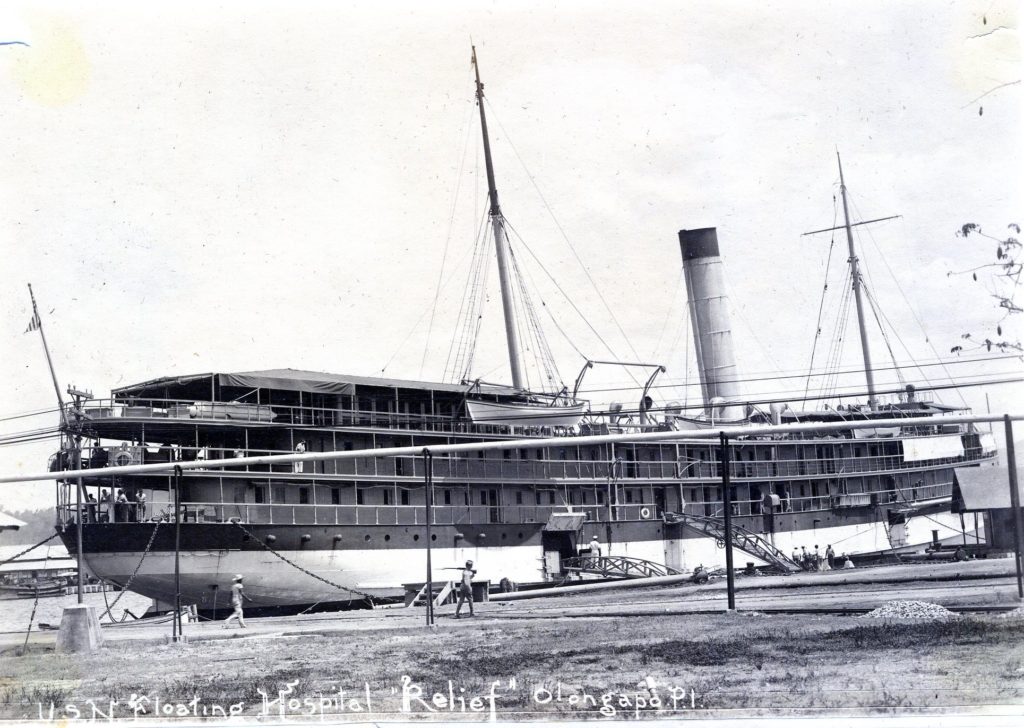
Ze853. Navy Hospital ship Relief in Olongapo, circa 1908. I notice it is moored with chains, that should mean it was there for a long time. I also notice a Marine Guard on the pier with a rifle. This is a picture of the Earl Hancock “Pete” Ellis collection in the U.S.M.C. archives.
——————————————————-
Earl Hancock “Pete” Ellis U.S.M.C. was a career officer in the Corps in the early 1900, took many pictures and they are now in the USMC Archives, click here for the link!
https://www.flickr.com/photos/usmcarchives/albums/72157710446176952/with/48586002701/
This album has 30 additional images of Olongapo in the early 1900!
——————————————————–

Ze854. Navy Hospital ship Relief in the Dewey Drydock at Olongapo circa 1908. I notice a deckhand on the port anchor, painting perhaps. Those anchors could not be housed very good; I wonder whether the needed to be hoisted on deck. This is a picture of the Earl Hancock “Pete” Ellis collection in the U.S.M.C. archives.
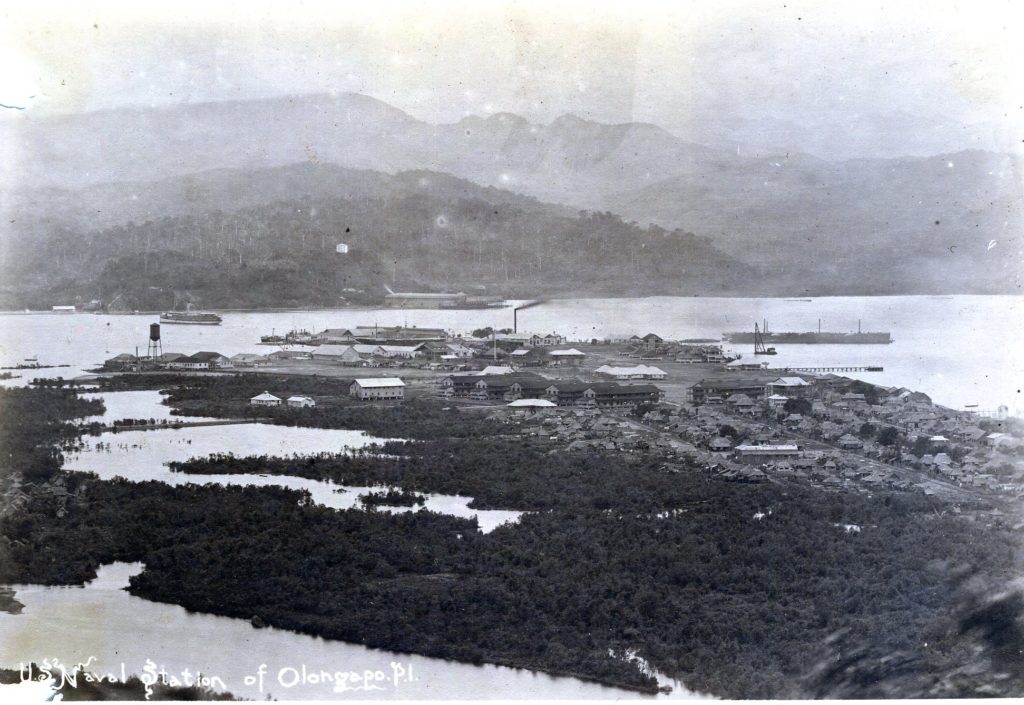
Ze855. This is best picture I seen so far of the Olongapo Naval Station and the Marine Barracks and the picture is from circa 1908. One can clearly see the large area the marines occupied outside the Navy Yard. The Marines were rather a regimental organization and not just the barracks. I don’t see the Olongapo Chapel jet nor the Olongapo Plaza. This is also the best shot of the coaling station across the Olongapo Harbor. This is a picture of the Earl Hancock “Pete” Ellis collection in the U.S.M.C. archives.
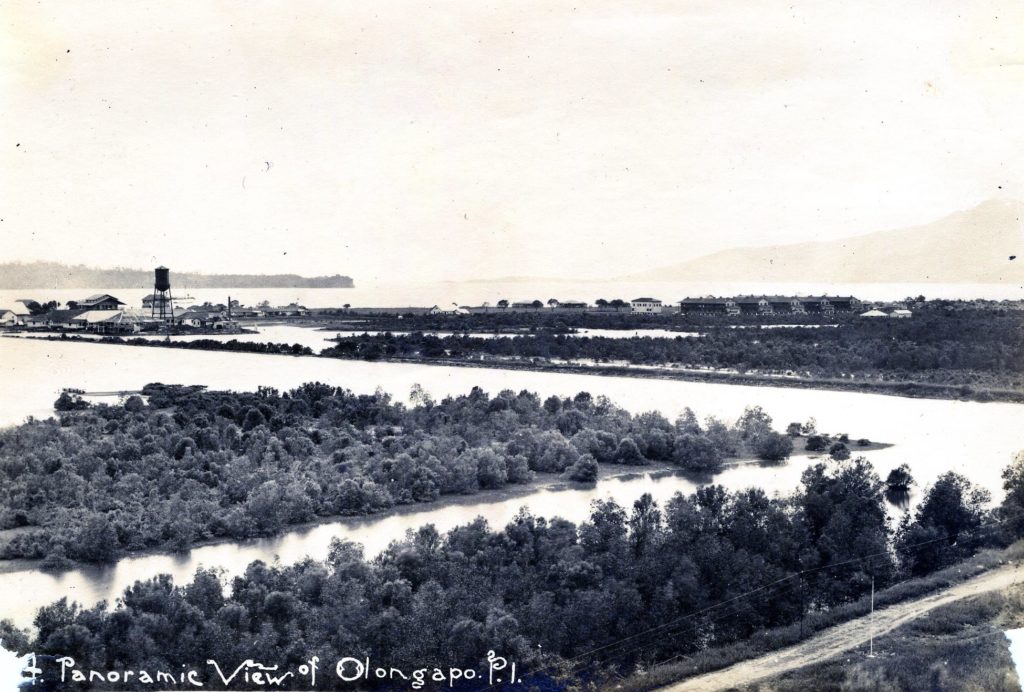
Ze856. This is another very unique picture of the Olongapo Naval Station, circa 1908. We nan make out Grande Island. This is a picture of the Earl Hancock “Pete” Ellis collection in the U.S.M.C. archives.
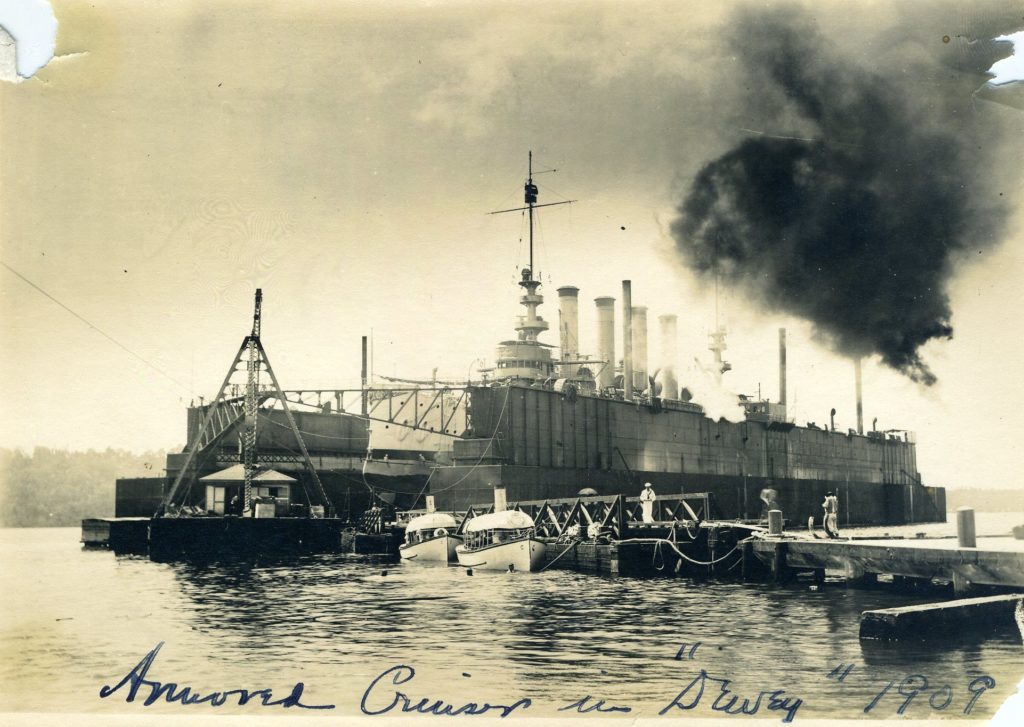
Ze857. An Armored Cruiser in the Dewey Drydock at the Olongapo Naval Station and yard, circa 1909. If you zoom in, I noticed two things; deck hands are over the side, port bow, painting the side. There are people in the water by the ship’s boats. This is a picture of the Earl Hancock “Pete” Ellis collection in the U.S.M.C. archives.
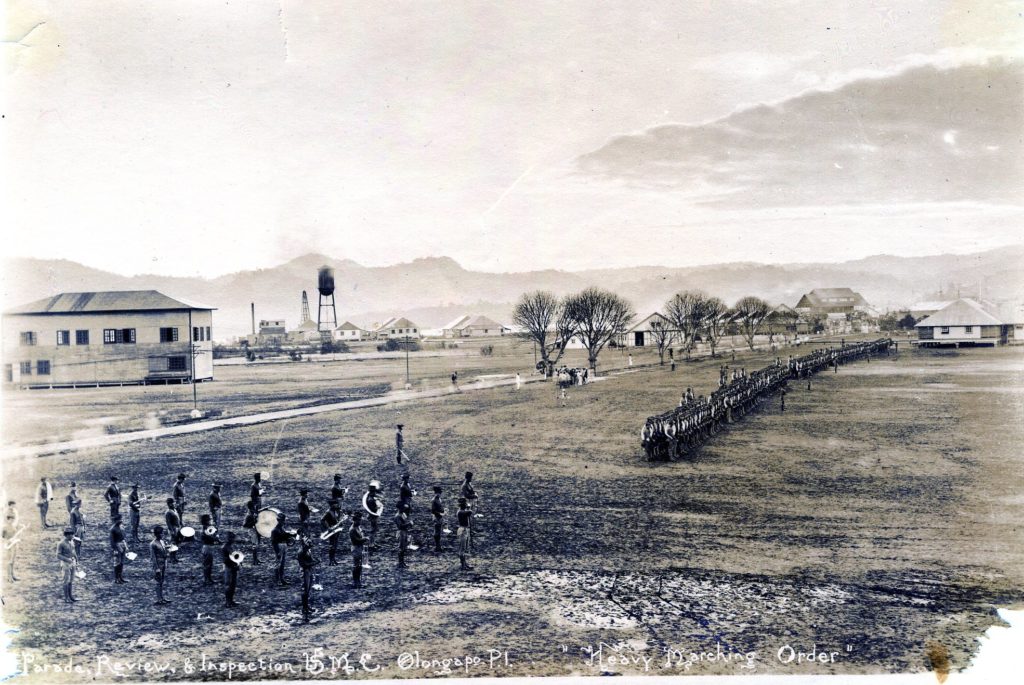
Ze858. The Marines are holding a parade review at their heavy marching order at the Olongapo Naval Station circa 1908. The road leads to the Spanish Gate and just to the left of it is the two story Navy administration building with a unique roof. This is a picture of the Earl Hancock “Pete” Ellis collection in the U.S.M.C. archives.
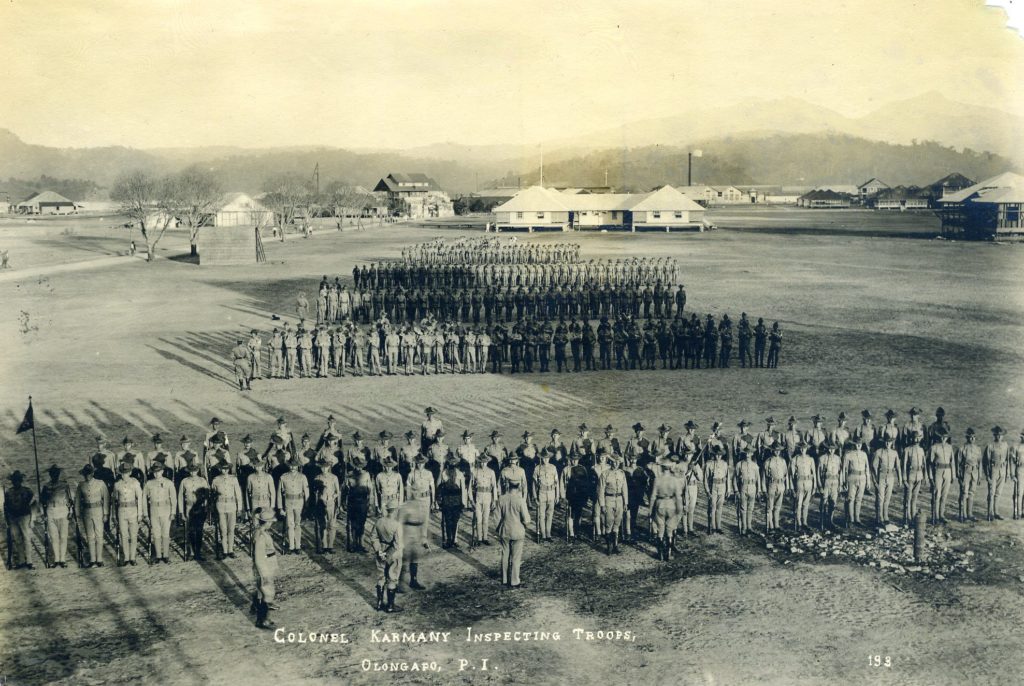
Ze859. The Marines are inspected by Colonel Karmany at the Olongapo Naval Station, circa 1908. This is the Marine area just outside the Spanish Gat, Navy Yard. We can clearly see the Spanish Gate and the uniquely roofed Navy Administration Building. The white building behind the troops, I call the clover leave Marine Headquarter Building (my speculation). Flagpole with flag is behind it. This is a picture of the Earl Hancock “Pete” Ellis collection in the U.S.M.C. archives.
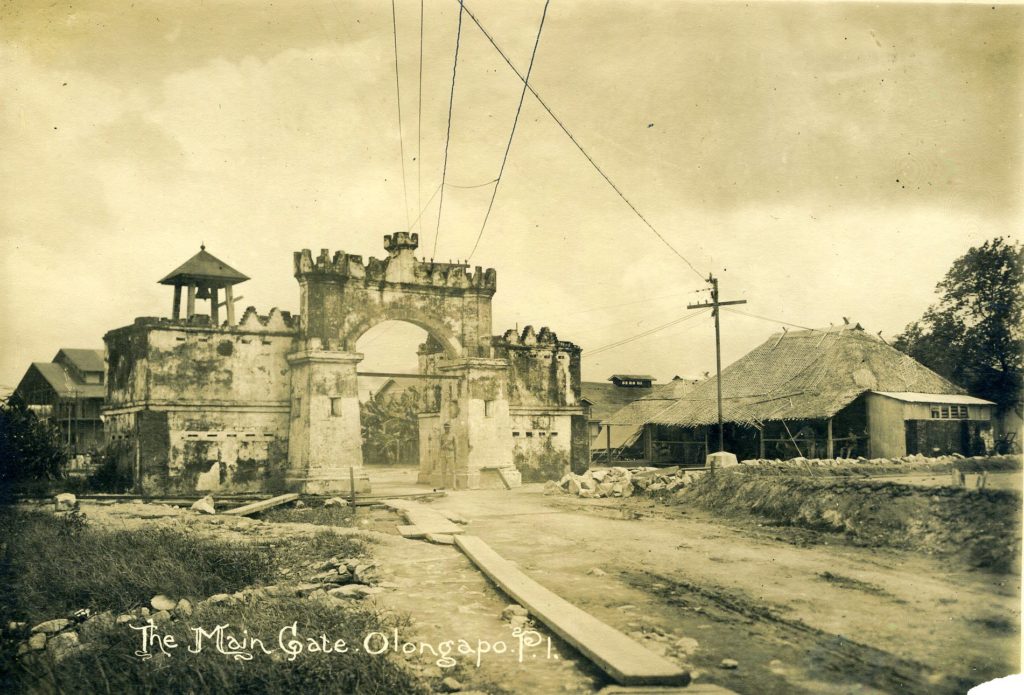
Ze860. The main gate to the Navy Yard in Olongapo, circa 1908, today we call it The Spanish Gate. This area looks shabby, where is the First Lieutenant of the yard who is supposed to keep this place ship shape. It looks like they have trouble with drainage, look at the wooden boards, apparently it gets wet and muddy here sometime. This is a picture of the Earl Hancock “Pete” Ellis collection in the U.S.M.C. archives.
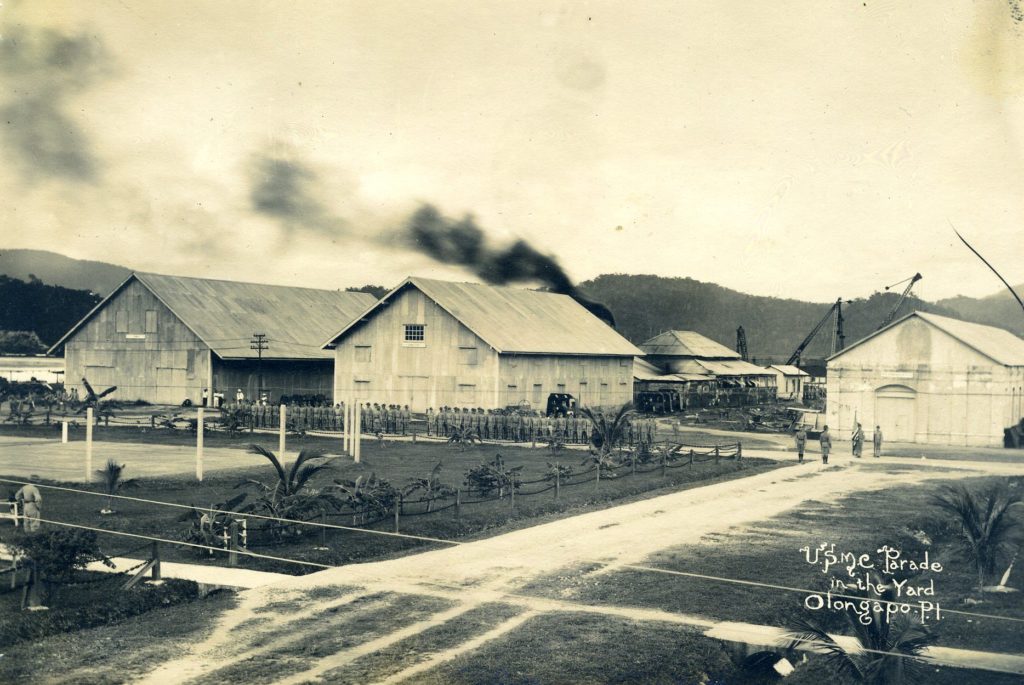
Ze861. This time the Marines in Olongapo held their parade, inspection inside the Navy Yard, circa 1908. You should be able to find these buildings in previous pictures. This is a picture of the Earl Hancock “Pete” Ellis collection in the U.S.M.C. archives.
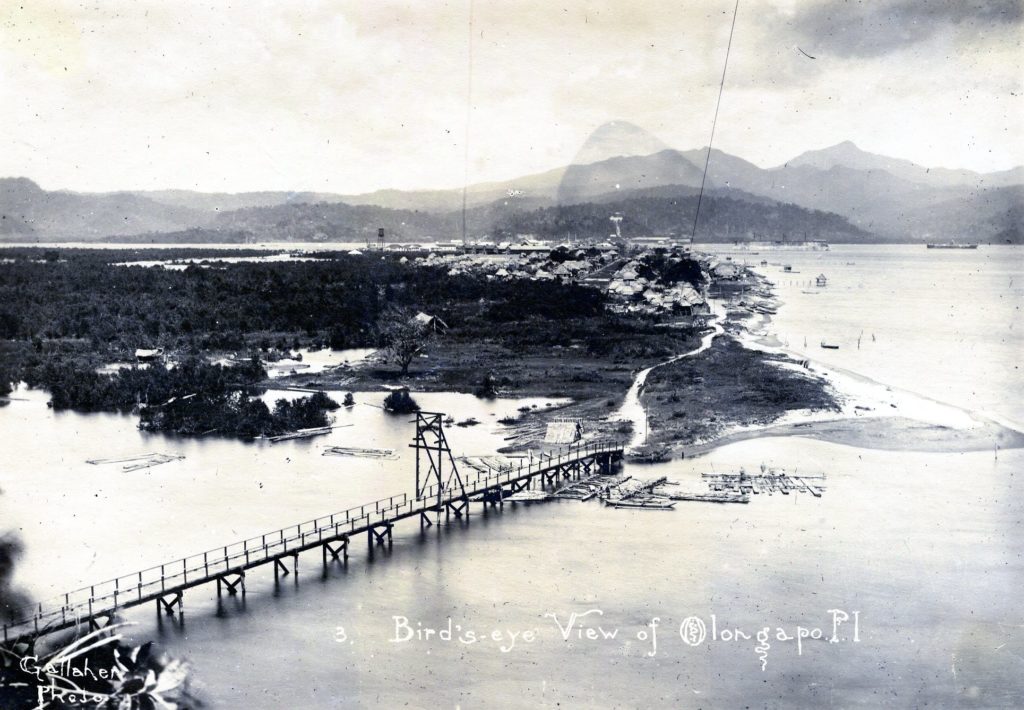
Ze862. Perhaps the 1st bridge over the mouth of the Kalaklan River in Olongapo, Subic Bay, circa 1908. I can make out the peak of Mt. Natib and the peaks of Mount Sta. Rosa left of it. This is a picture of the Earl Hancock “Pete” Ellis collection in the U.S.M.C. archives.
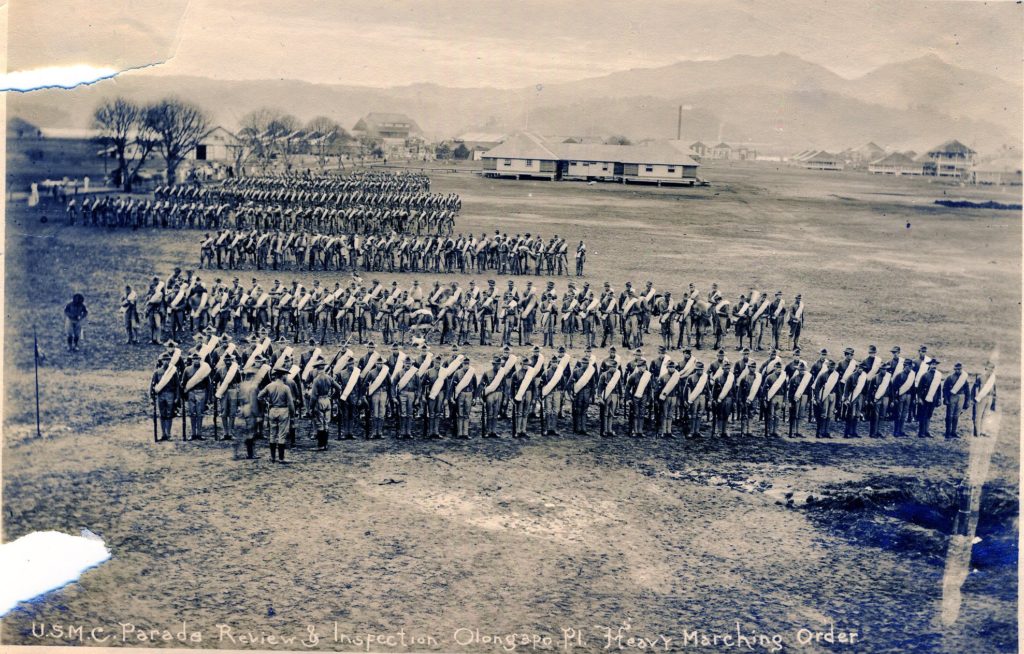
Ze863. The Marines are holding a parade review at their heavy marching order at the Olongapo Naval Station circa 1908. The road leads to the Spanish Gate and just to the left of it is the two-story Navy administration building with a unique roof. The white building behind the troops, I call the clover leave Marine Headquarter Building (my speculation). This is a picture of the Earl Hancock “Pete” Ellis collection in the U.S.M.C. archives.
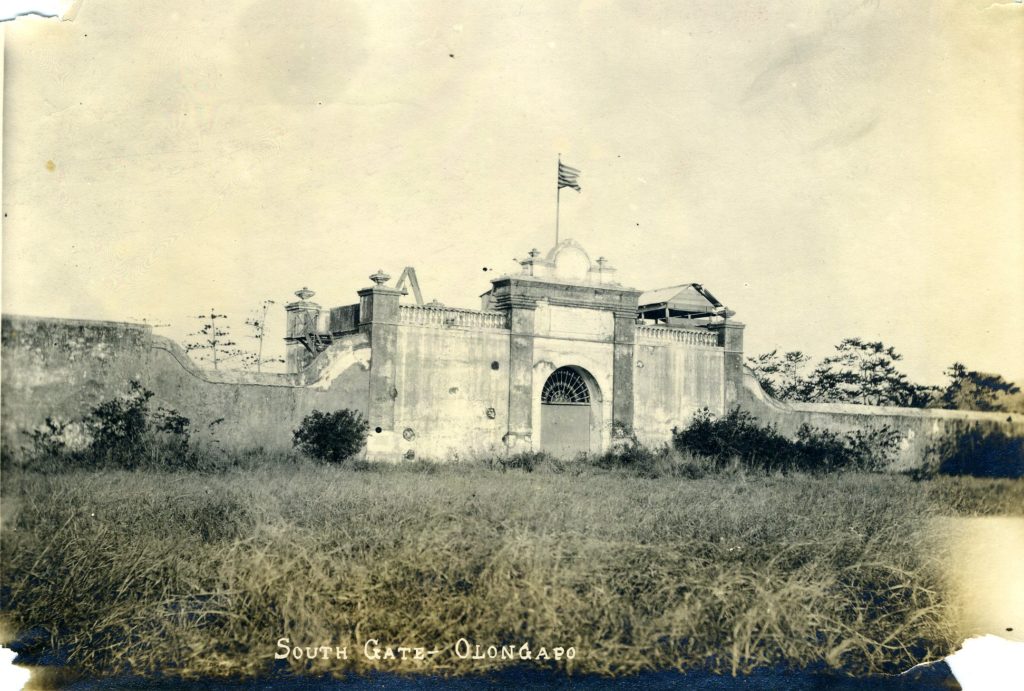
Ze864. That is the best image I ever saw of the Olongapo Navy Yard South Gate, with wall and a flagpole with flag can also be seen, circa 1908. This is a picture of the Earl Hancock “Pete” Ellis collection in the U.S.M.C. archives.
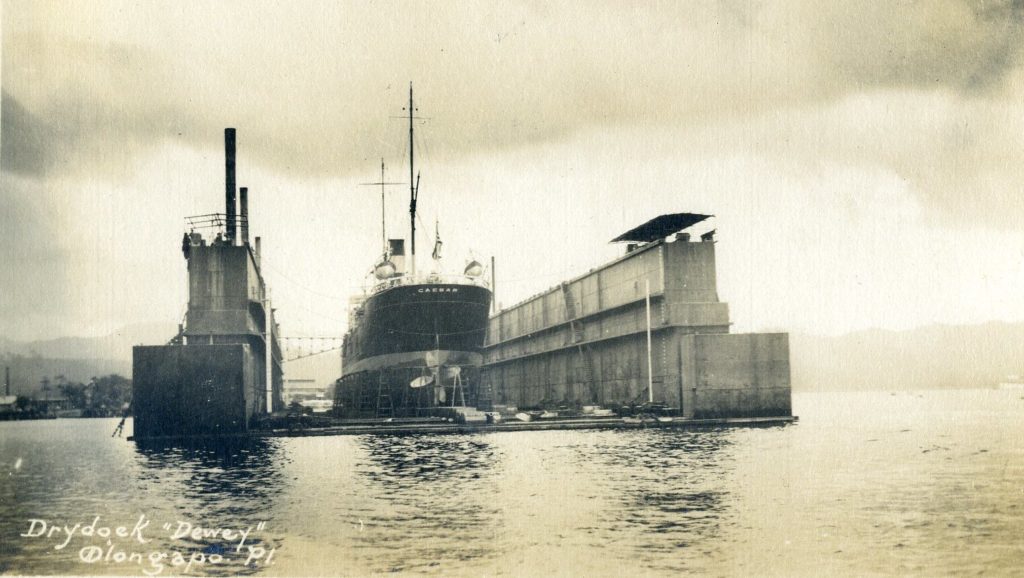
Ze865. USS Caesar in the Dewey Drydock in Olongapo, circa 1908. Here is part of a writeup about this ship from the below URL: This is a picture of the Earl Hancock “Pete” Ellis collection in the U.S.M.C. archives.
Commissioned in mid-May, she transported coal in support of combat activities in the Caribbean area during that brief conflict and, for more than two decades, in both the Atlantic and Pacific as part of the Navy’s wide-ranging logistics system. Her voyages to the Far East included three of special interest. In December 1905 – July 1906 Caesar helped tow the “Dewey” floating drydock from the United States to the Philippines, and a few years later she made two trips to take submarines to Manila Bay. USS Porpoise and USS Shark were transported out on her decks in April-July 1908, while USS Adder and USS Moccasin went out in July-October 1909. This is a picture of the Earl Hancock “Pete” Ellis collection in the U.S.M.C. archives.
http://www.ibiblio.org/hyperwar/OnlineLibrary/photos/sh-usn/usnsh-c/ac16.htm

Ze866. A very rare, and good quality picture of the U.S Marine Corps area in the Naval Station Olongapo, circa 1908. This is west, or better SW of the Spanish Gate to the Navy Yard. The building, I frequently have called: The white Clover Leave Marine HQ Building (my speculation) is bigger than I thought. This is a picture of the Earl Hancock “Pete” Ellis collection in the U.S.M.C. archives.
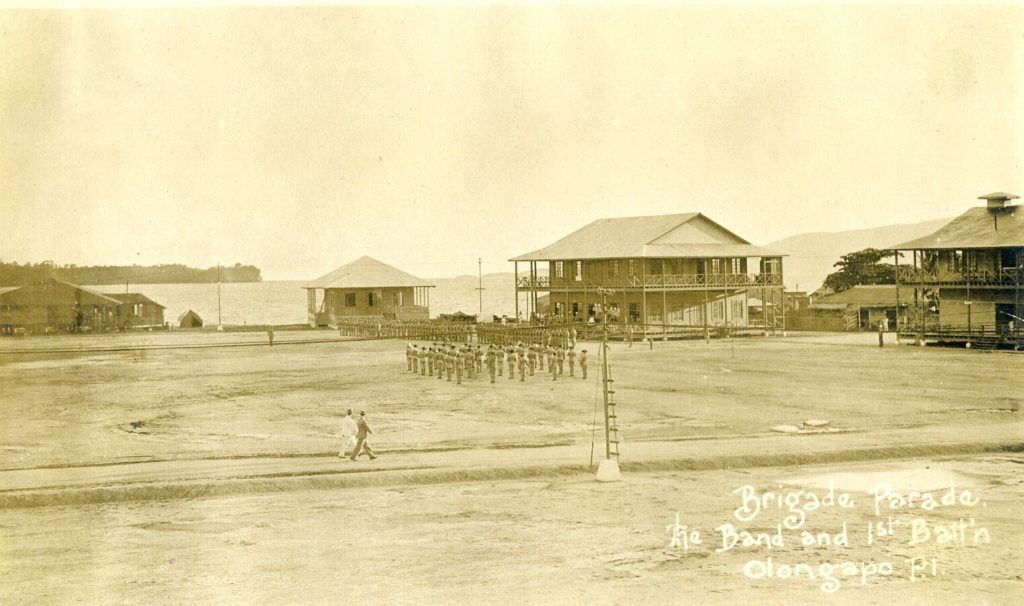
Ze867. The 1st Battalion, should be from the 1st Regiment, holding, standing a Brigade Parade at the Olongapo Naval Station circa 1908. During this time, we should not consider this the Marine Barracks, rather we should think of the Marines here in Olongapo as a U.S.M.C Base supporting American interests in the far east. This picture is the opposite view of the previous picture #Ze866. We see the actual Cubi Point, that later became the Naval Air Station. This is a picture of the Earl Hancock “Pete” Ellis collection in the U.S.M.C. archives.
This is a short history of the Marines in Subic Bay, click here or copy and paste the URL:
www.subicbaypi.com/subic_history_marine.htm
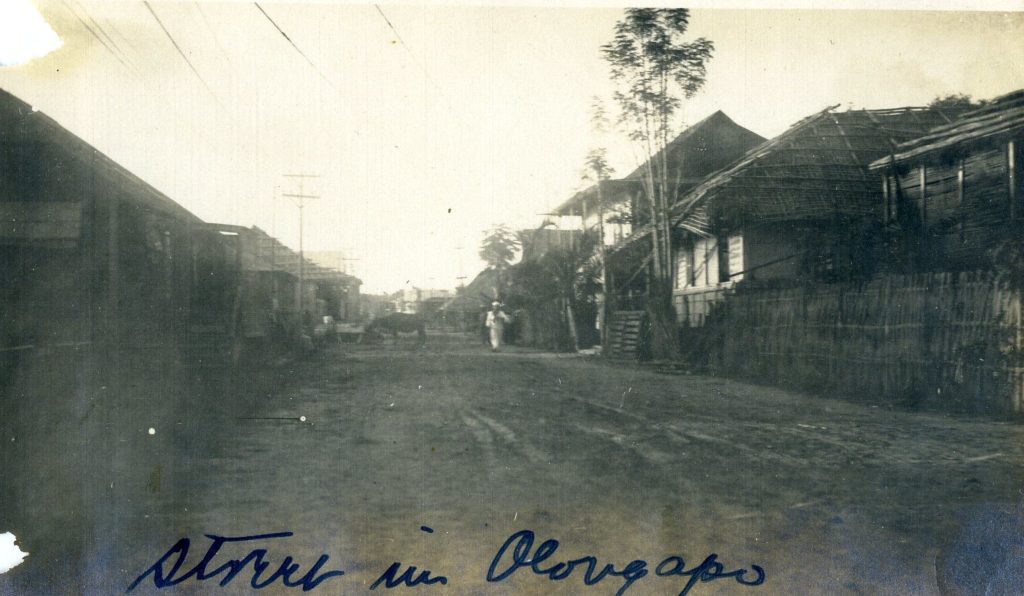
Ze868. A lone sailor on liberty in the streets of Olongapo, circa 1908. Wow, no body else on the street, is he returning from overnight liberty early in the morning? This is a picture of the Earl Hancock “Pete” Ellis collection in the U.S.M.C. archives.
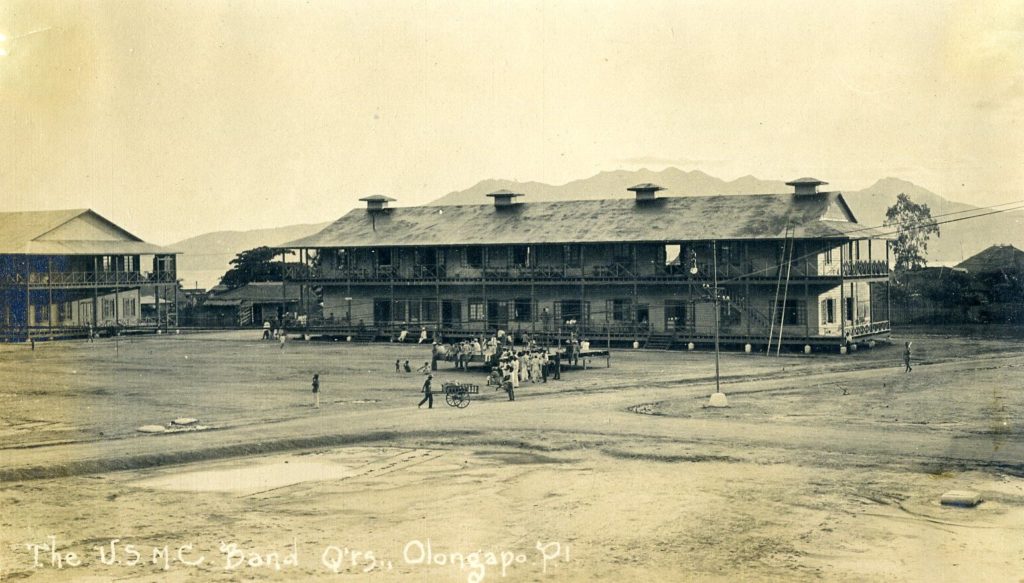
Ze869. The USMC Band Barracks, one of the two barracks on that side of the future George Dewey Ave., circa 1909 The other 5 barracks are on this side. The people in white may be a school class and other children are hanging around in front of the barracks. I see a long ladder leaning on the barracks and Marine seems to be marching towards us with a rifle. Some of the ground is muddy and I see some one did walk thru mud, perhaps the man with the push card; look at the tracks. This is a picture of the Earl Hancock “Pete” Ellis collection in the U.S.M.C. archives.
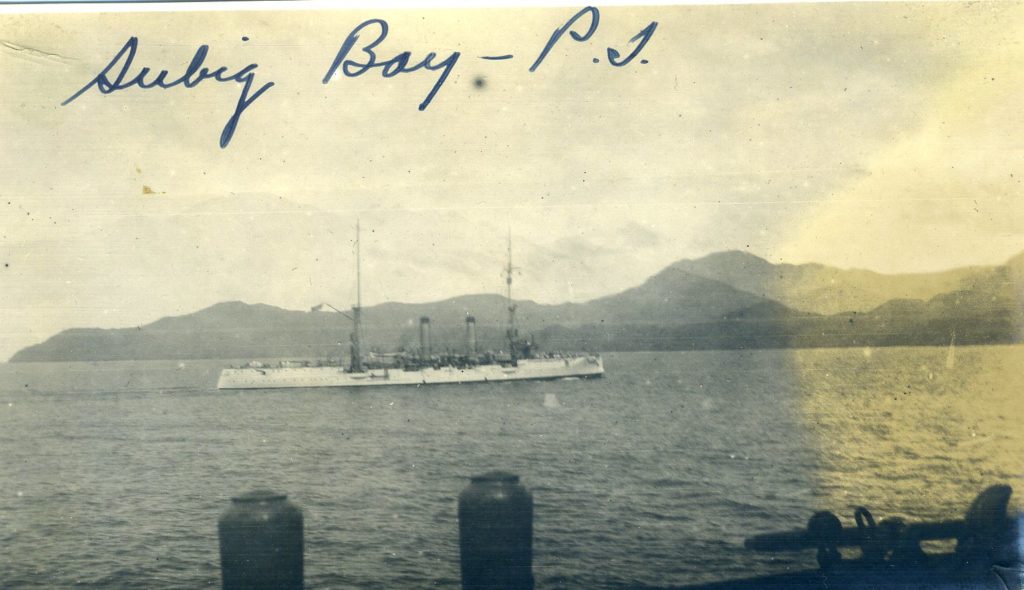
Ze870. A warship, circa 1909, the picture says Subic Bay but I wonder whether that is correct; the mountain profile doesn’t seem to match. This is a picture of the Earl Hancock “Pete” Ellis collection in the U.S.M.C. archives.
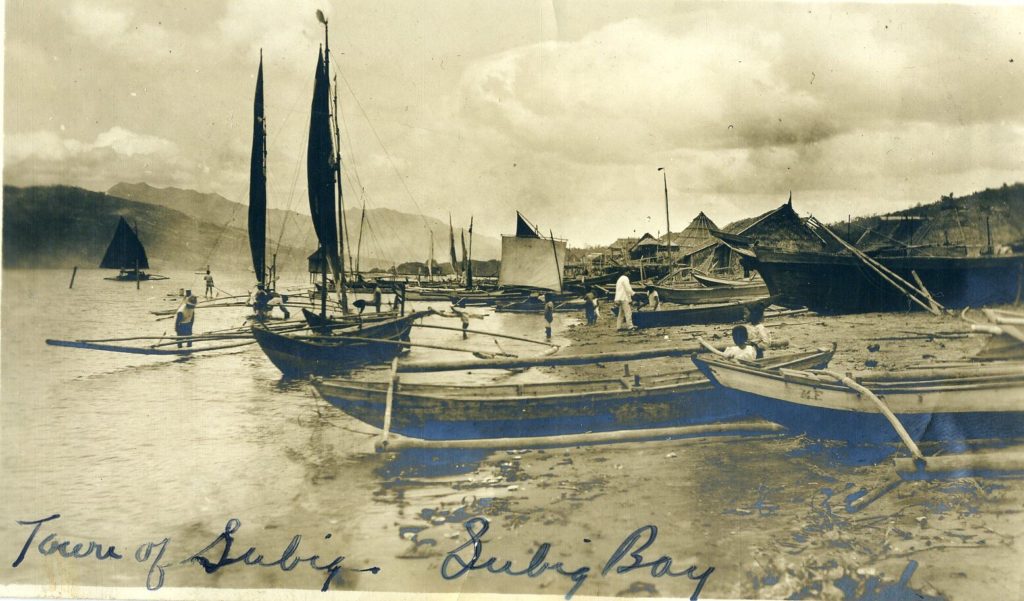
Ze871. The busy waterfront beach of Olongapo, circa 1909. During my time in the Navy we did not use the beach. But it is now the Subic Bay Freeport Zone beach and it very busy now, hotels and restaurants. In this picture I recognize the two mountains at left, the smaller on is Mt. Redondo which gives its name to the Redondo Peninsular. The higher peak, next to it is Mt. Pointed Peak on my map but is also called Mt. Balingkilat by the locals. At that time all the Filipino fishermen were real sailors, knowing to sail. This is a picture of the Earl Hancock “Pete” Ellis collection in the U.S.M.C. archives.
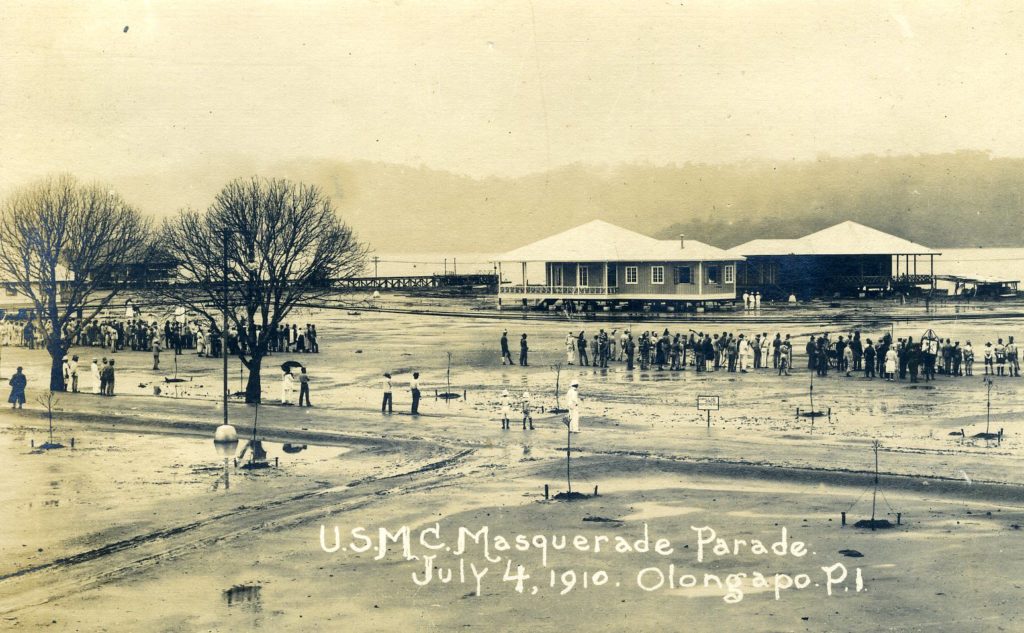
Ze872. A 4th July celebration circa 1910; it is the USMC Masquerade Parade on the USMC grounds west of the Olongapo Navy Yard. At this time, we have come across many pictures the Navy and Marines had problem with mud at that ground at that time, at least some of the time. That problem disappeared in that area in our modern time. This is a picture of the Earl Hancock “Pete” Ellis collection in the U.S.M.C. archives.
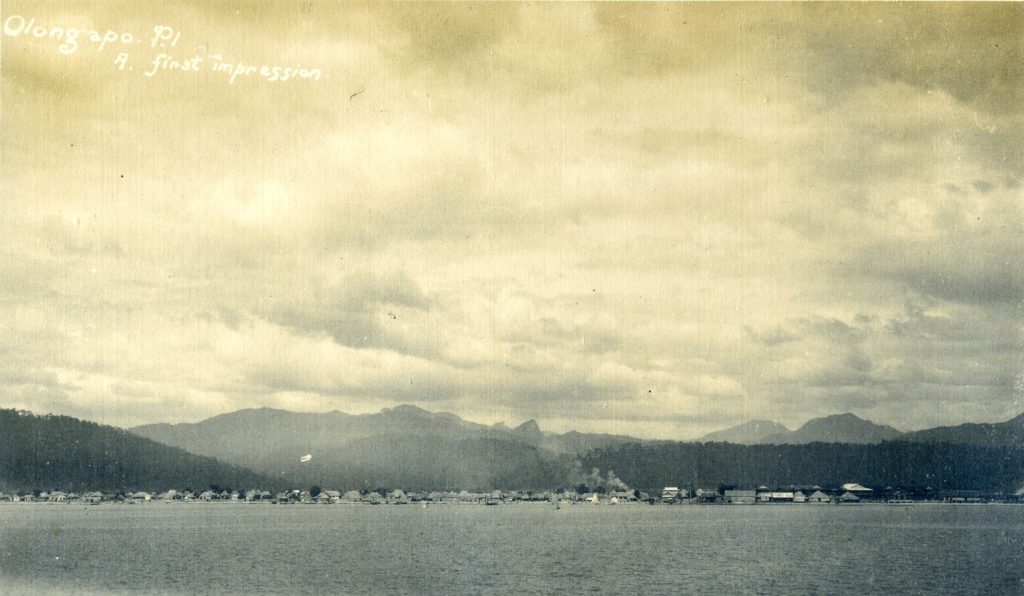
Ze873. Olongapo and Olongapo Naval Station, circa 1910. The Mountain profile in back has not changed, that is the way it still looks today. This is a picture of the Earl Hancock “Pete” Ellis collection in the U.S.M.C. archives.
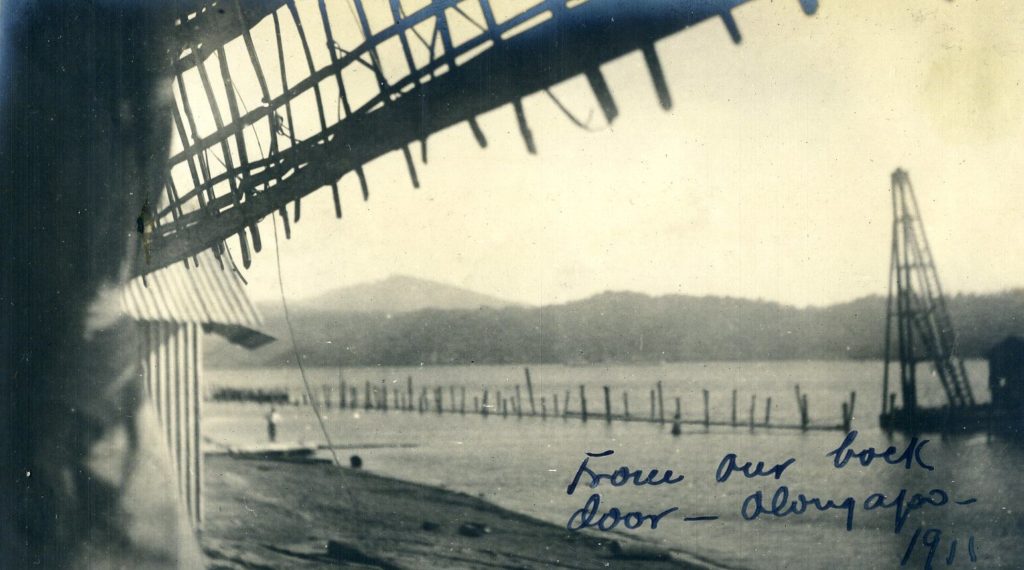
Ze874. A view from the backdoor of one of the officer’s bungalow across the Olongapo Harbor. The near shoreline is the today Boton area and on the nearest high peak is where the former Naval Hospital was. This is a picture of the Earl Hancock “Pete” Ellis collection in the U.S.M.C. archives.
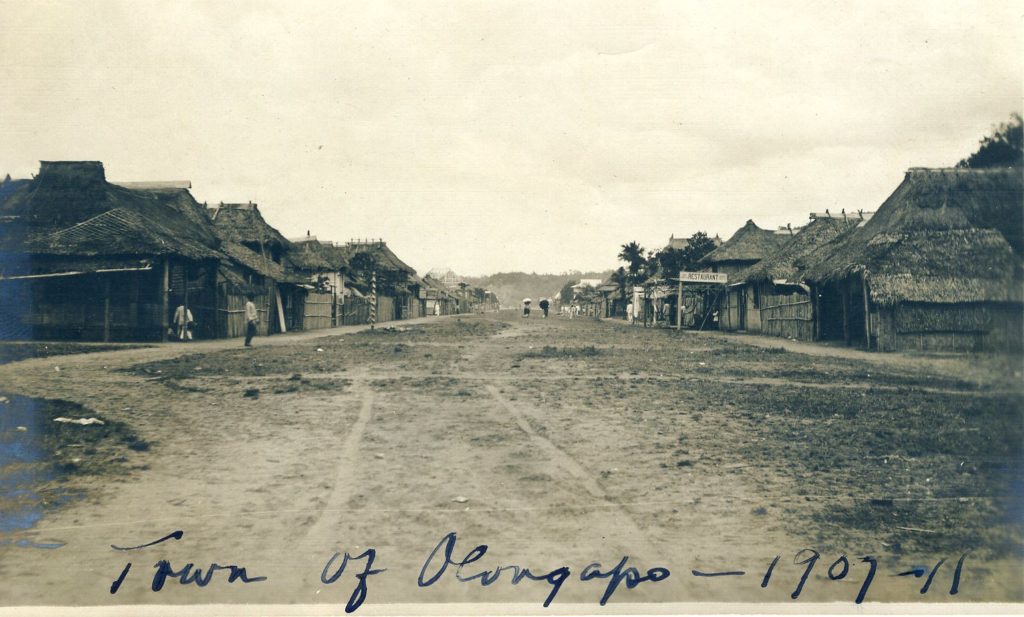
Ze875. This must be the future Dewey Ave. circa 1907-11, it is amazing wide already and I see only one lonely restaurant. This view must be towards Kalaklan Ridge. This is a picture of the Earl Hancock “Pete” Ellis collection in the U.S.M.C. archives.
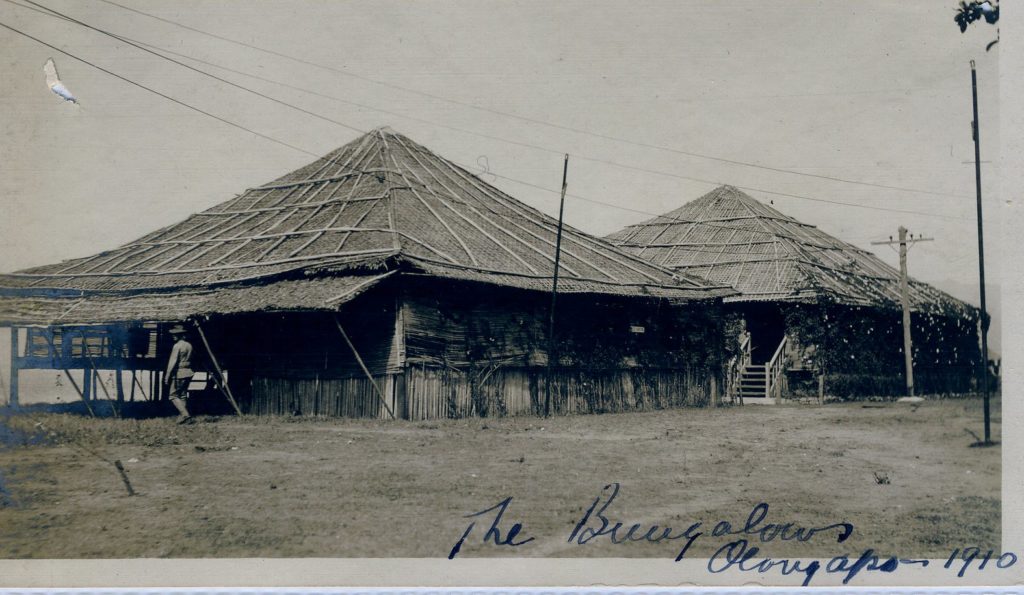
Ze876, Two officer bungalows on the waterfront of the Marine Corps area in the Naval Station Olongapo circa 1910; not exactly triple A accommodations. This is a picture of the Earl Hancock “Pete” Ellis collection in the U.S.M.C. archives.
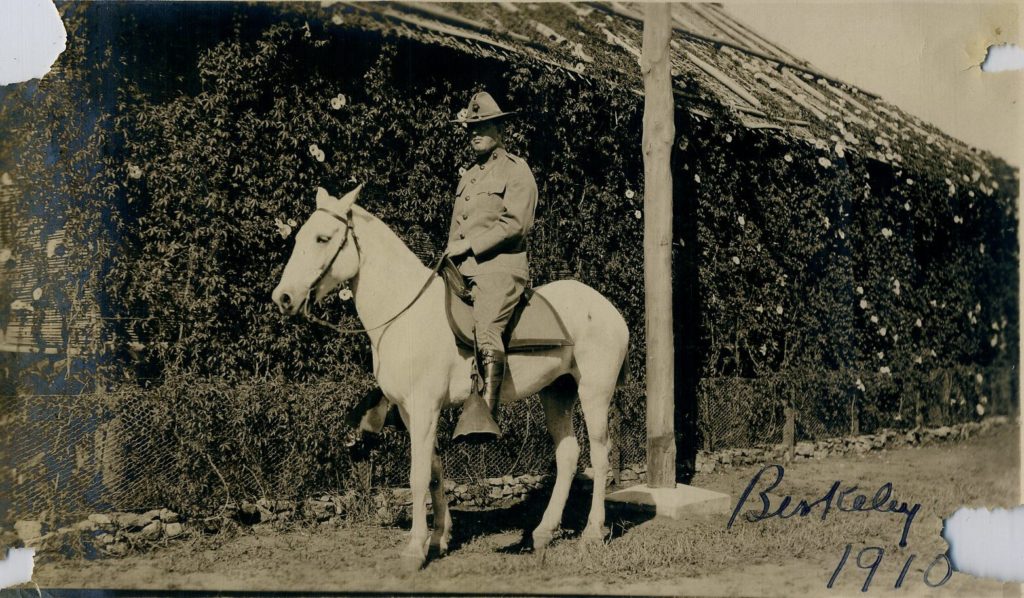
Ze877. The Marine Corps officers wore riding breeches and boots after all, so the horses were not gone completely at this time; this picture is in Olongapo next to the officer bungalows located along the waterfront of the Olongapo Harbor, circa 1910. This is a picture of the Earl Hancock “Pete” Ellis collection in the U.S.M.C. archives.
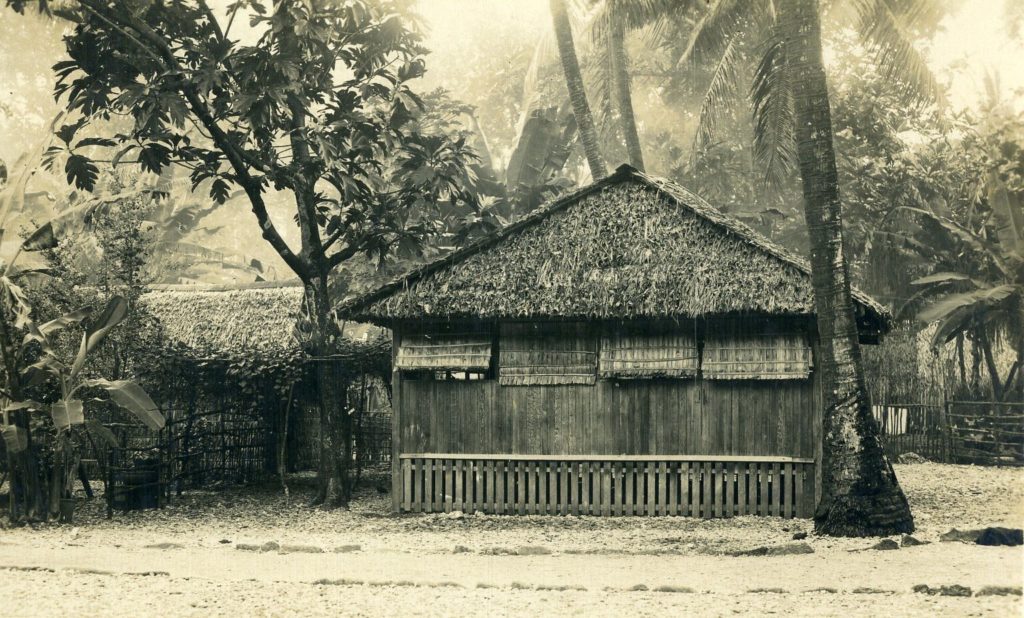
Ze878. This looks like a neat small native hut but the USMC Archive doesn’t say where. But it is safe to assume that it could have been in Olongapo circa 1910. This is a picture of the Earl Hancock “Pete” Ellis collection in the U.S.M.C. archives.
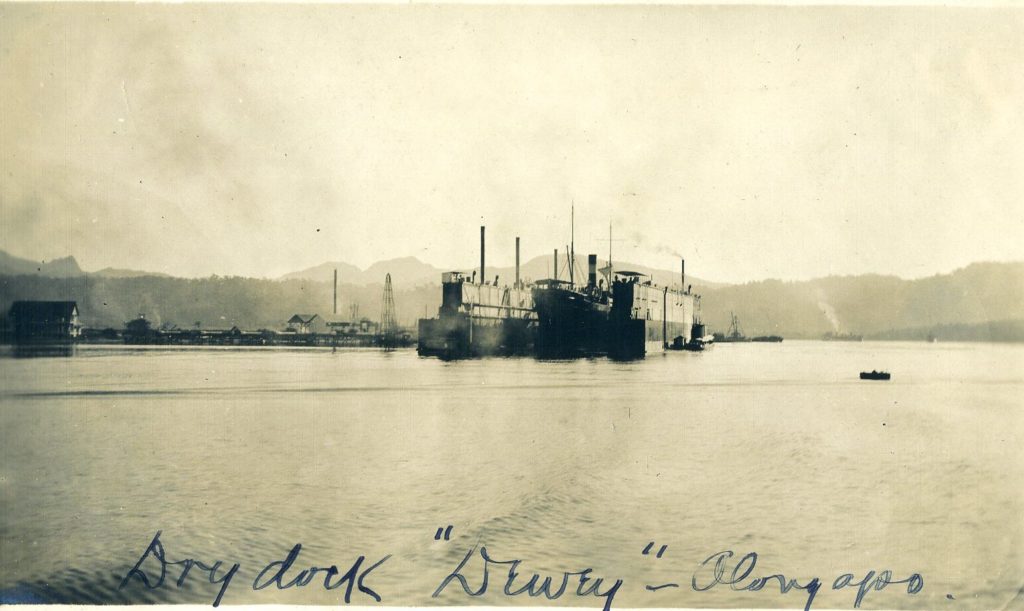
Ze879. The drydock Dewey in the Navy Yard of the Olongapo Naval Station, circa 1910. The mountain behind the drydock is the PLDT Mountain which has the communication towers on top, these days. I have been on that mountain several times. This is a picture of the Earl Hancock “Pete” Ellis collection in the U.S.M.C. archives.
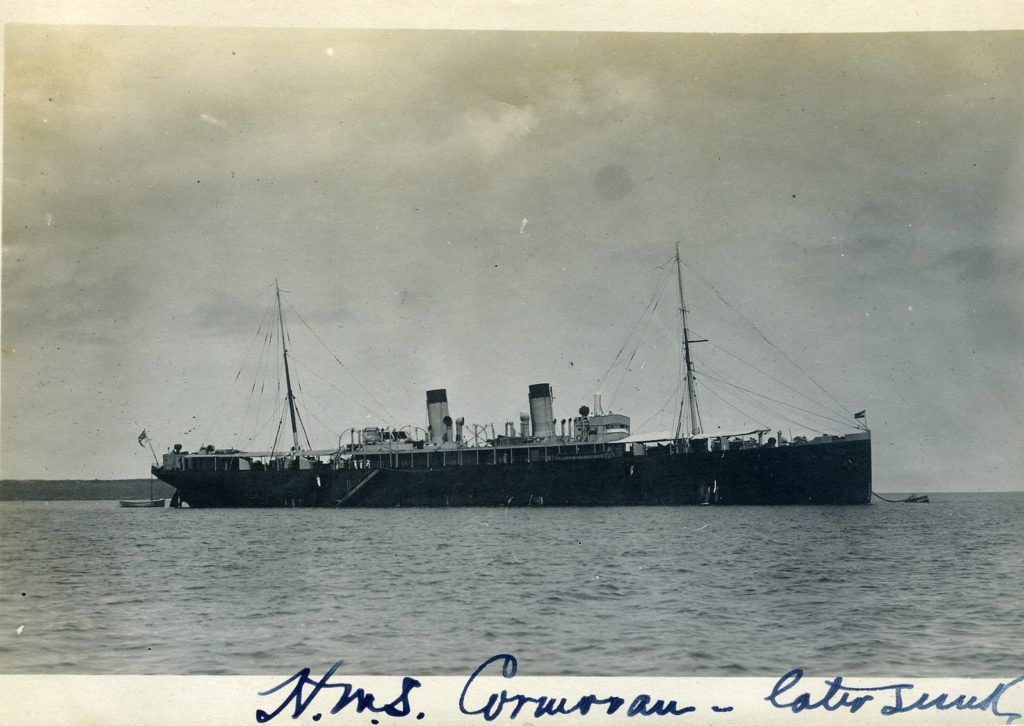
Ze880. I selected this picture thinking it is in the Philippines. If I’m right, this picture is a big surprise! The Marines got it wrong when they labeled this ship HMS Cormoran, circa 1909. It must be the German Auxiliary Cruiser SMS Cormoran and it should be circa 1914 to 1917. The Marines can claim that they fired the first shot in WW One at the SMS Cormoran in Guam. This is a picture of the Earl Hancock “Pete” Ellis collection in the U.S.M.C. archives.
A brief history from this URL, click here: https://www.visitguam.com/smscormoranguam/a-brief-history/
The SMS Cormoran II initially came to Guam in December 1914 out of coal and weary from avoiding enemies throughout the Pacific. While the US was not involved in World War I, Guam’s military governor decided against refueling the vessel, but did allow the German sailors to come ashore. The Cormoran and her crew stayed in Guam for two and a half years, becoming very friendly with the people until the day the United States officially entered World War I.
On that day, with the US now at war with Germany, the Guam military governor ordered Captain Adalbert Zuckschwerdt to surrender the Cormoran. Unaware of the new conditions, a supply boat returning to the Cormoran with supplies failed to stop when ordered to by US sailors who then fired a warning shot over its bow. This was the first official shot fired by the US in World War I.
Rather than surrender his ship, Captain Zuckschwerdt decided it would be more patriotic to scuttle her instead, which he did. For the next 26 years, the SMS Cormoran II lay undisturbed on the sea floor, until August 27, 1943. On this day, a US submarine torpedoed the Tokai Maru, a Japanese freighter during World War II. The Tokai Maru came to rest lying perpendicular against the Cormoran. The two ships are the only place in the world where divers can touch shipwrecks from two different World Wars at the same time.
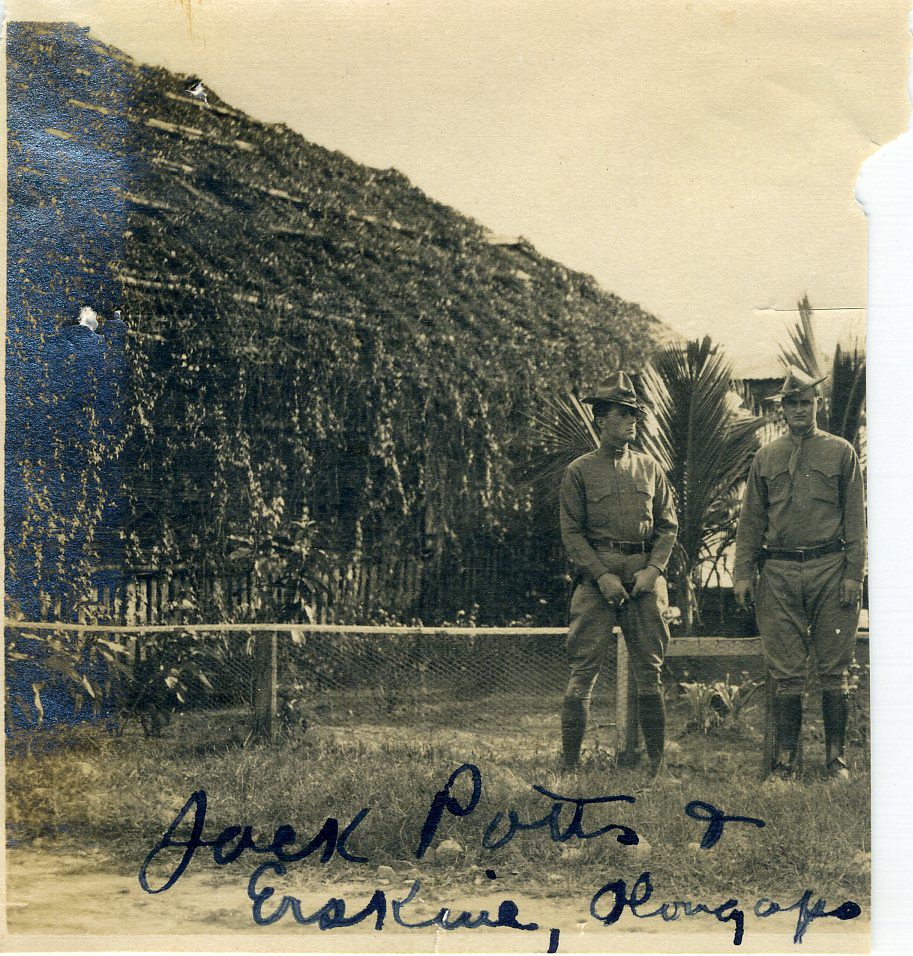
Ze881. Two USMC officers standing next to one of their bungalows on the waterfront of the Marine Corps area in the Naval Station Olongapo circa 1910; not exactly triple A accommodations. This is a picture of the Earl Hancock “Pete” Ellis collection in the U.S.M.C. archives.
—————————————————
US Naval Station of Olongapo Early 1900s
These two early 1900 images of the US Naval Station of Olongapo and the large US Marine Corps Presence Then were sent to me by US Marine (Ret) Friend Bert Caloud.
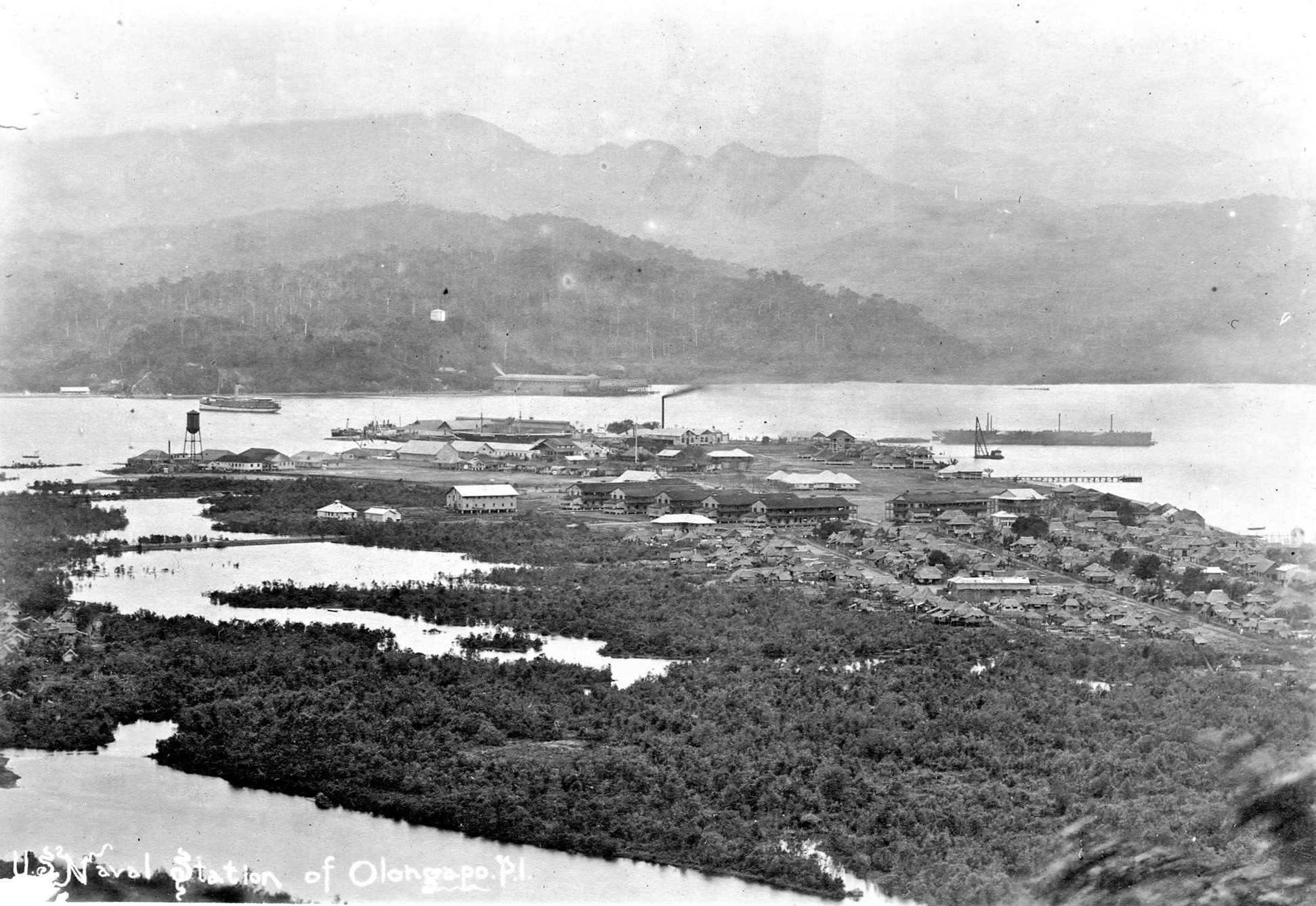
Zf570. This Naval Station of Olongapo picture in the early 1900s is in this album already but this one is much clearer. It seems to have been shot from the Kalaklan Ridge and it is much clearer and it seems to be zoomed in
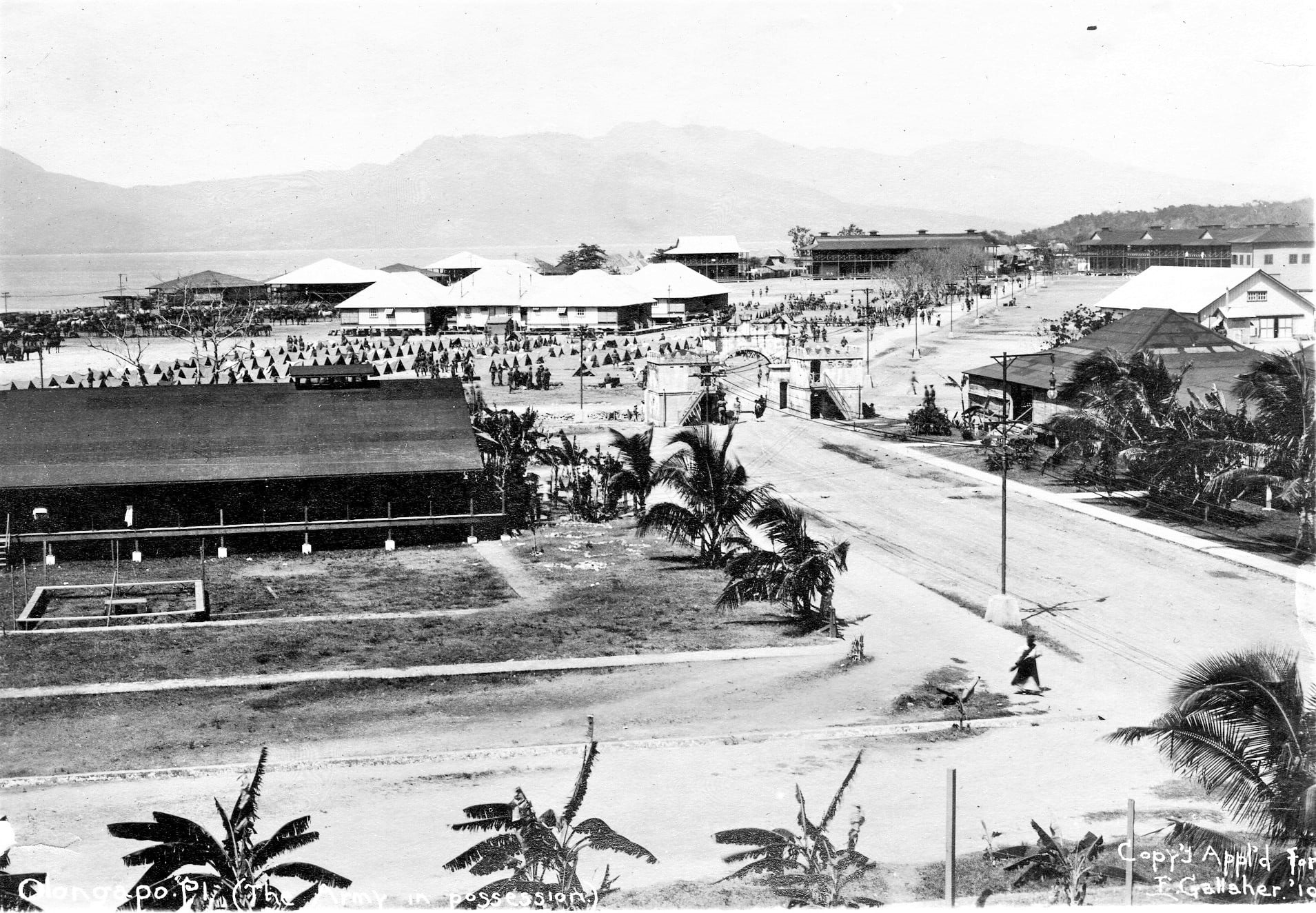
Zf571. This Naval Station of Olongapo picture in the early 1900s, I have not seen before. This picture really shows a large Marine Corps presence, look at all those tents and the horses at left. Or could it be that the Army came for a visit? Notice the Naval Station of Olongapo West Gate, now called the Spanish Gate. So, this picture shows clearly that the area outside the Spanish Gate was a US Marine Corps area. Those Two Story Buildings are Marine Corps Barracks.